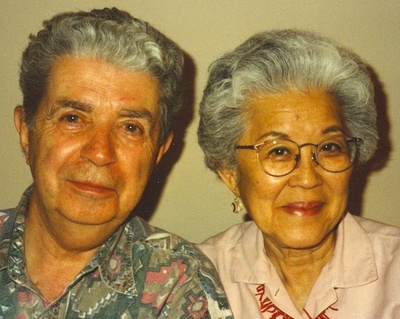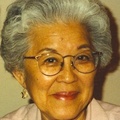On July 9, 1981, I submitted a memorandum on the subject “Use of term ‘concentration camps’” to the executive director of the Commission on Wartime Relocation and Internment of Civilians (CWRIC). At that time, I was a member of the research staff of the CWRIC. My memo began with this summary of my findings:
A search of archival documents reveals that most government authorities, Congressional officials, as well as the public at large, referred to the 1942-46 “relocation centers” as concentration camps. The following are examples which show that there was no question that high government officers, and even President Roosevelt himself, considered them as concentration camps [emphasis mine].1
That statement was followed by nineteen specific examples. Space limitations preclude a full list here, but a few examples illustrate the specificity of the evidence cited in my memo:2
1. President Roosevelt, Presidential Press and Radio Conference: “...it is felt by a great many lawyers that under the Constitution they (persons of Japanese ancestry) can’t be locked up in concentration camps [emphasis mine].” -- Source: Franklin D. Roosevelt Library (FDRL), OF 197. FDR Press Conferences #982. Vol. 246-248. November 21, 1944. CWRIC #3597.3
2. President Roosevelt, Presidential Press Conference:
Q: “Mr. President, will some of the Mexicans replace the Japanese in the truck gardens in California?”
A: “The President: That I don’t know.”
Q: “Where did the Japanese come from who are being shipped off to Montana, sir?”
A: “The President: Concentration camps.” [emphasis mine]. – Source: FDRL, Of 197. FDR Press Conferences #863. Vol. 20. October 20, 1942. CWRIC #3595.
3. Francis Biddle, Attorney General, Department of Justice (DoJ). December 30, 1943, letter to the President, Franklin D. Roosevelt: “The present practice of keeping loyal American citizens in concentration camps [emphasis mine] on the basis of race for longer than is absolutely necessary is dangerous and repugnant to the principles of our government.”-- Source: FDRL, OF 4849. Folder: War Relocation Authority (WRA). CWRIC #3722.
4. John J. McCloy, Assistant Secretary of War, War Department, memo of March 28, 1942, to Eisenhower: “There are also some grave legal difficulties in placing American citizens, even of Japanese ancestry, in concentration camps.” [emphasis mine]. -- Source: National Archives (NA). RG 107-Records of the Secretary of War. Entry 47, Box 8. Folder: ASW 014.311. CWRIC #588.
I wrote the memo because I saw my responsibility as staff researcher to be more than a mere compiler of conclusions and summations of existing publications. Thereafter I focused my attention on primary sources in the National Archives and other repositories.
During the course of my work as a CWRIC researcher I learned that “relocation center,” “non-aliens,” and “evacuation” were only a few of many euphemisms that were deliberately used to obscure and conceal what was done to American citizens under the fraudulent rationale of “military necessity.” In fact, it was not lost on me that the extremely problematic word “internment” was in the very title of the Commission on Wartime Relocation and Internment of Civilians. That is the reason for a list of terms that I had tentatively named a “Work in Progress” which I began to compile after beginning my association with the CWRIC. Over the years a fuller descriptive subtitle evolved: “Terminology: WW II Exclusion/Incarceration of West Coast Japanese Americans.” The latter refers not only to the Nisei–literally, the second generation of Japanese in America, who were U.S. citizens by birthright--but also to their Issei (first generation) immigrant pioneer parents who were banned from applying for naturalized citizenship.
What follows is a personal story of how my consciousness about the uses and abuses of euphemistic terminology has evolved through the hard work and courage of many individuals from myriad backgrounds, both without and within the community of Nikkei (persons of Japanese ancestry). I am certainly not alone, nor among the first, to be concerned about the power of words to lie or clarify, and the need to identify and replace inaccurate and misleading euphemisms that were used by government officials at all levels and perpetuated by many Nikkei as well.
In 1969 much controversy ensued when the hagiographic Nisei: The Quiet Americans, written by longtime Japanese American Citizens League (JACL) insider Bill Hosokawa, was published. Many Sansei (third generation Nikkei) as well as progressive Nisei, including this writer, were offended by the title’s perpetuation of meek and supine stereotypes of Japanese Americans, and we were therefore delighted to see the appearance of solidly researched revisionist histories with hard-hitting titles, such as Roger Daniels’ Concentration Camps, USA: Japanese Americans and World War II (1971), and Michi Weglyn’s Years of Infamy: The Untold Story of America’s Concentration Camps (1976). It was during the early 1970s that a nationwide movement for an official government apology and monetary compensation for wartime losses slowly began to coalesce, and eventually evolved into what became known as the redress movement.4
As early as 1973, a war raged between proponents and opponents of euphemisms to describe the wartime Nikkei incarceration in the normally placid meetings of state historic landmark commissions and museum exhibitions. In 1973, the site of the former War Relocation Authority (WRA) concentration camp at Manzanar, California, was granted state historic site status, but when the wording for a bronze plaque to commemorate the site came before the State Historical Resources Commission, the majority on that body voted against calling it a “concentration camp.” Nadine Ishitani Hata was the first Japanese American appointed to the commission, but she was in the minority. Fierce opposition to “concentration camps” included an alliance between Lillian Baker, a widow whose husband died as a prisoner of war in the Japanese-occupied Philippines, and former WRA director Dillon Myer. Baker denied that Nikkei had suffered in the WRA camps, vehemently denounced the redress movement, and even described U.S. Senator Daniel K. Inouye of Hawaii as “a blackguard who dares blaspheme a Country he has taken an oath to defend.”5
After prolonged public acrimony the matter was finally resolved when the State Director of Parks and Recreation overruled the commission’s majority, and the words “concentration camps” appears on the bronze plaque at Manzanar and later at Tule Lake (1975).6
Notes:
1. Aiko Herzig-Yoshinaga, Research Staff, CWRIC, to the Executive Director, CWRIC, July 9, 1981.
2. Ibid.
3. The Franklin D. Roosevelt Library is identified as FDRL. Figures following the initials “CWRIC” represent the commission’s number assigned to the document in its Numerical File section among the commission’s extensive records accessioned in the National Archives and may be located in Record Group 220-Records of Temporary Committees, Commissions, and Boards, in series “Commission on Wartime Relocation and Internment of Civilians.”
4. Bill Hosokawa. Nisei: The Quiet Americans (New York: Morrow, 1969). Roger Daniels. Concentration Camps, USA: Japanese Americans and World War II (New York: Holt, Rinehart and Winston, 1971); Roger Daniels. Concentration Camps USA: North America. Japanese in the United States and Canada during World War II (New York: Holt, Rinehart and Winston, 1971); and Michi Weglyn. Years of Infamy: The Untold Story of America’s Concentration Camps (New York: William Morrow, 1976). For the redress movement, see: Roger Daniels, Sandra Taylor, and Harry L. Kitano (eds.). Japanese Americans: From Relocation to Redress, Revised Edition (Seattle: University of Washington Press, 1986); William Hohri. Repairing America: An Account of the Movement for Japanese-American Redress (Pullman, Washington: Washington State University Press, 1988); and Mitchell T. Maki, Harry H.L. Kitano, and S. Megan Berthold. Achieving the Impossible Dream: How Japanese Americans Obtained Redress. Forwards by Representative Robert T. Matsui and Roger Daniels (Urbana, Illinois: University of Illinois Press, 1999).
5. Richard Drinnon. Keeper of Concentration Camps: Dillon S. Myer and American Racism (Berkeley, California: University of California Press, 1987), p. 253.
6. Hata referred to the political maneuvering that finally resolved the issue in her book, The Historic Preservation Movement in California, 1940-1976 (Sacramento: Department of Parks and Recreation/Office of Historic Preservation, 1992), pp. 168-72. She co-authored an interpretive essay: Donald Teruo Hata and Nadine Ishitani Hata. Japanese Americans and World War II: Mass Removal, Imprisonment, and Redress, Third Ed. (Wheeling, IL: Harlan Davidson, 2006); also see: http://www.historians.org/perspectives/issues/2005/0505/0505mem1.cfm
*Note: This essay has circulated over the past decade among friends and research associates with the working title “Work in Progress: Terminology – WW II exclusion/incarceration of West Coast Japanese-Americans.” Copyright © 2009. Rev. 2010.
© 2009 Aiko Herzig-Yoshinaga




